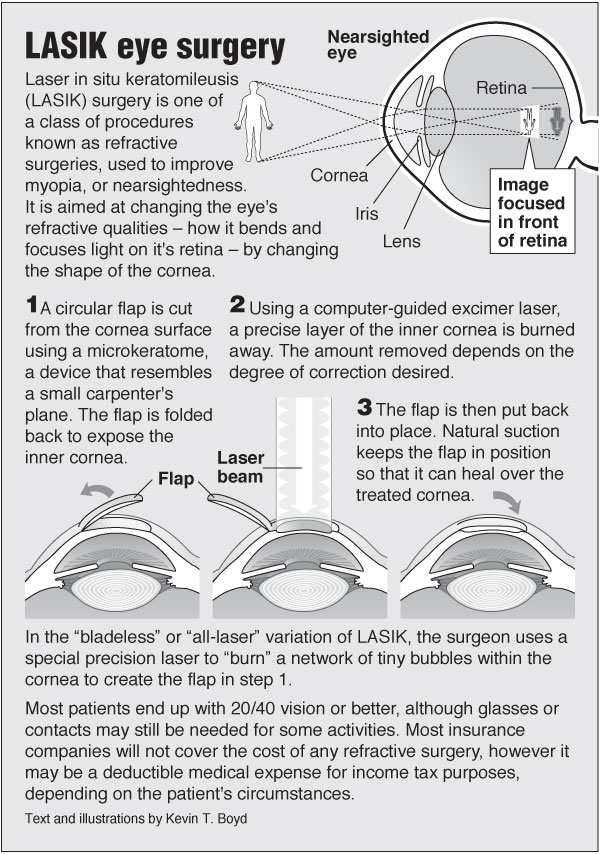What Are The Differences And Similarities In Between SMILE Eye Surgery And LASIK And PRK?
What Are The Differences And Similarities In Between SMILE Eye Surgery And LASIK And PRK?
Blog Article
Staff Writer-Humphries Sander
If you've been thinking about SMILE eye surgical procedure, you might wonder how it compares to LASIK and PRK. Each treatment has its own collection of advantages and factors to consider. From quicker recuperation times to possible dangers, there are vital differences you need to be aware of prior to deciding. Understanding these distinctions will certainly help you make an enlightened option that straightens with your particular demands and expectations. Interested to know even more concerning how these treatments contrast carefully? Continue exploring to gain a thorough understanding of SMILE, LASIK, and PRK.
SMILE Eye Surgery Summary
If you're thinking about SMILE eye surgery, you'll discover it to be a minimally invasive treatment with a quick recuperation time. Throughout https://best-price-laser-eye-surg84062.snack-blog.com/26499835/do-natural-treatments-for-dry-eye-in-fact-job-or-are-they-simply-a-myth (Tiny Incision Lenticule Extraction), a laser is made use of to create a small, specific incision in the cornea to get rid of a little item of cells, reshaping it to correct your vision. This differs from LASIK, where a flap is developed, and PRK, where the external layer of the cornea is completely removed.
Among the vital advantages of SMILE is its minimally intrusive nature, leading to a faster healing procedure and less discomfort post-surgery. The recovery time for SMILE is fairly quick, with lots of clients experiencing boosted vision within a day or two. This makes it a preferred choice for those looking for a practical and reliable vision improvement treatment. In bending over after cataract surgery , SMILE has actually been shown to have a reduced threat of dry eye syndrome contrasted to LASIK, making it a beneficial choice for individuals concerned regarding this potential adverse effects.
Distinctions Between SMILE, LASIK, and PRK
When comparing SMILE, LASIK, and PRK eye surgical procedures, it is essential to comprehend the distinctive techniques made use of in each procedure for vision improvement.
SMILE (Tiny Cut Lenticule Removal) is a minimally invasive procedure that involves creating a tiny cut to extract a lenticule from the cornea, reshaping it to correct vision.
LASIK (Laser-Assisted In Situ Keratomileusis) includes developing a thin flap on the cornea, utilizing a laser to improve the underlying cells, and afterwards repositioning the flap.
PRK (Photorefractive Keratectomy) gets rid of the outer layer of the cornea before reshaping the tissue with a laser.
The primary difference depends on the means the cornea is accessed and dealt with. SMILE is flapless, making it a good alternative for people with thin corneas or those involved in call sporting activities. LASIK uses quick visual recovery because of the flap creation, yet it might pose a higher risk of flap-related issues. PRK, although having a longer recovery duration, stays clear of flap-related concerns entirely.
Understanding these variations is critical in selecting the most suitable treatment for your vision improvement demands.
Pros and Cons Contrast
To evaluate the advantages and drawbacks of SMILE, LASIK, and PRK eye surgeries, it's important to consider the particular benefits and potential limitations of each treatment. SMILE surgical procedure provides the advantage of a minimally invasive treatment, with a smaller incision and potentially quicker recuperation time compared to LASIK and PRK. It likewise decreases the risk of dry eye post-surgery, a typical adverse effects of LASIK. However, Risks Of LASIK Surgery might have restrictions in dealing with higher levels of nearsightedness or astigmatism contrasted to LASIK.
LASIK surgical procedure provides fast aesthetic healing and very little discomfort during the procedure. It's very efficient in treating a wide variety of refractive errors, including nearsightedness, hyperopia, and astigmatism. Yet, LASIK brings a risk of flap difficulties, which can affect the corneal structure.
cataract surgery for diabetics , while not as prominent as LASIK, prevents producing a corneal flap, minimizing the threat of flap-related problems. It's suitable for individuals with slim corneas or irregular corneal surfaces. Nevertheless, PRK has a much longer healing time and might entail more pain during the healing procedure.
Conclusion
So, when it involves choosing in between SMILE, LASIK, and PRK, think of it like choosing the ideal pair of footwear. SMILE resembles a smooth, comfy pair of sneakers - quick and simple.
LASIK is more like fashionable high heels - flashy and fast, but with some potential threats.
PRK resembles durable treking boots - trusted and durable, but requiring a little bit more effort and time.
Eventually, the very best choice depends upon your specific needs and preferences.
